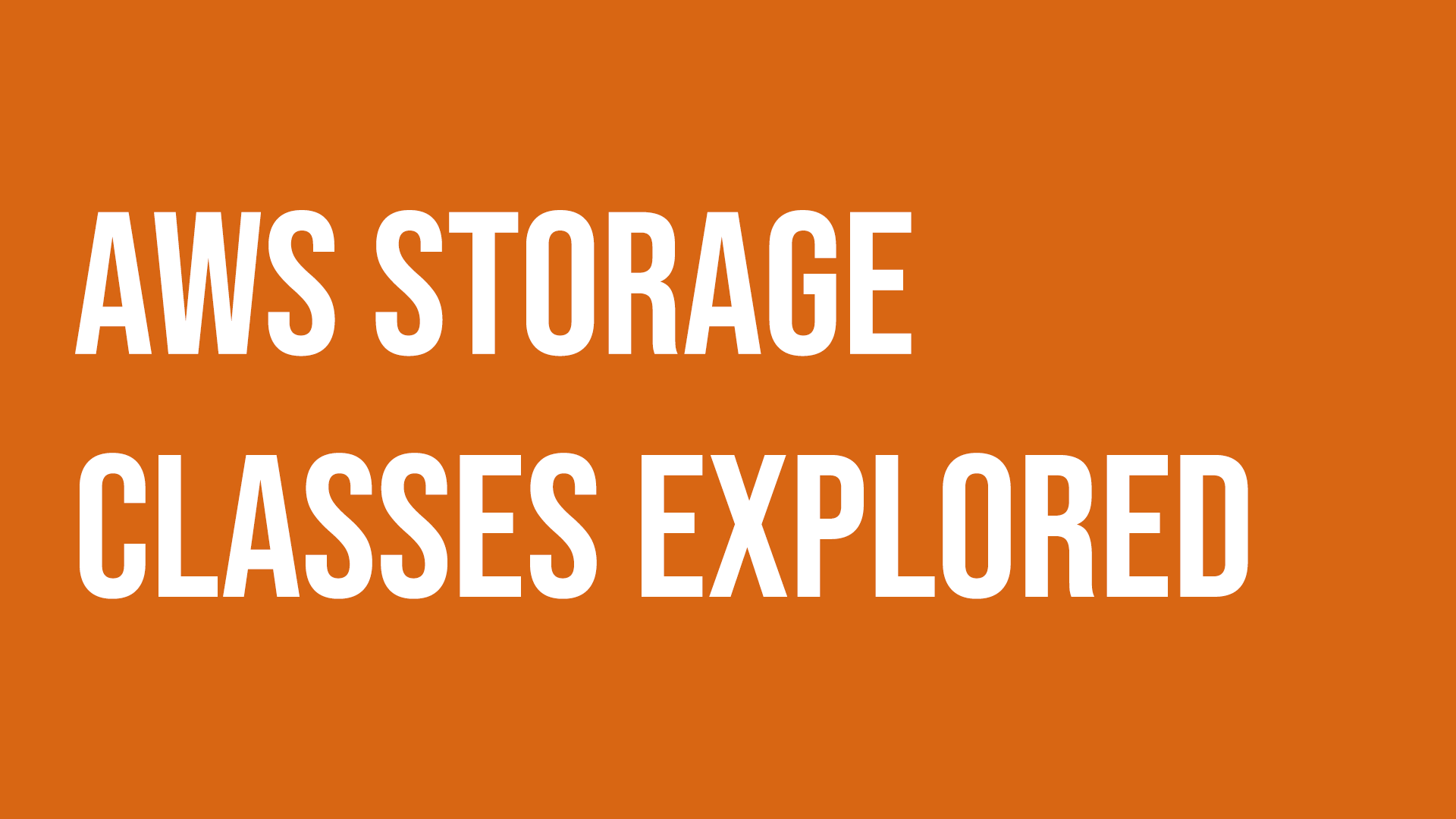AWS Storage Classes explored
Starting your AWS journey or studying for the AWS Certified Cloud Practitioner exam? Here is some useful explanations to the different AWS storage classes.

Are you starting your AWS learning journey or studying towards the AWS Certified Cloud Practitioner exam? Below is a guide to the various tiers of classes that exist when you spin up an Amazon Simple Storage Service (Amazon S3) storage resource.
AWS S3 Storage Classes
Amazon S3 offers eight storage classes:
- S3 Standard - this is a general purpose tier, that supports applications that require low latency and high throughput.
- S3 Intelligent-Tiering - this tier is great for data with unknown or changing needs. The tier analyses customer access patterns and then automatically moves data to the least expensive tier.
- S3 Standard-Infrequently Accessed - this tier is ideal for infrequently accessed data such as backup or disaster recovery (DR) data.
- S3 One Zone-Infrequently Accessed - this tier does not offer resilience or availability so it should only be used for data you can easily recreate or you have copies of elsewhere.
- S3 Glacier Instant Retrieval - this tier is ideal for data that needs to be stored for a long time, but when it needs accessed it needs right away. For example medical X-Rays or dental records.
- S3 Glacier Flexible Retrieval - another tier that is ideal for data that isn't always accessed but when it does need to be accessed it can be quick but instant retrieval isn't needed. For example you could use this for backup or disaster recovery (DR) where you need flexibility to retrieve that data but don't care about the costs of that retrieval.
- S3 Glacier Deep Archive - if you only need to retrieve data once or twice a year, this is the tier for you. It has the lowest price of any tier.
- S3 Outposts - this added storage features to your on-premises AWS Outputs environments.